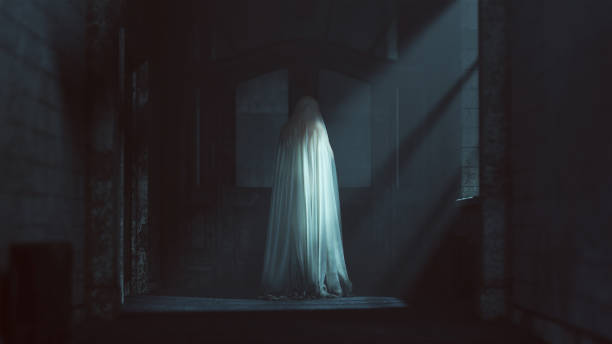How To Write Filler Scenes (13 Best Steps You Need To Know)
In the intricate tapestry of storytelling, every scene serves a purpose, propelling the narrative forward and enriching the reader’s experience.
Yet, there exists a category of scenes that, at first glance, might seem insignificant or superfluous – the so-called “filler scenes.” These subtle interludes, however, are anything but inconsequential.
They are the threads that weave the subtext, breathe life into characters, and create immersive worlds. Writing filler scenes is an art that, when mastered, elevates a story from good to unforgettable.
In this comprehensive guide, we will embark on a journey into the realm of filler scenes, unraveling their purpose, and discovering the techniques that transform them into powerful tools for engaging storytelling.
Whether you’re a seasoned author looking to refine your craft or an aspiring writer seeking to understand the nuances of storytelling, the secrets of writing compelling filler scenes are about to unfold.
How To Write Filler Scenes
Writing filler scenes can be an essential part of storytelling to maintain pacing and character development. Here’s a step-by-step process on how to write filler
scenes effectively
Understand the Purpose
Before you start writing a filler scene, understand its purpose in your story. Filler scenes can serve various functions, such as character development, mood setting, world-building, or foreshadowing. Knowing why you need one is crucial.
Maintain Relevance
Even though it’s a filler scene, it should still contribute to the overall narrative. Ensure that the scene is relevant to the plot, characters, or themes in some way. It can be subtle, but it should have a purpose.
Character Focus
Filler scenes are an excellent opportunity to delve deeper into your characters. Explore their thoughts, emotions, and backgrounds. Use the scene to reveal more about your characters and their motivations.
Conflict and Tension
While a filler scene may not contain major plot points, it should have some conflict or tension. It keeps the reader engaged and prevents the scene from feeling too mundane. This conflict can be internal or external, depending on the context.
Setting and Description
Filler scenes are a chance to enrich your world and immerse the reader. Use descriptive language to paint a vivid picture of the setting, creating a sensory experience for your audience.
Dialogue and Interaction
Conversations between characters can be a powerful tool in filler scenes. They can reveal information, deepen relationships, or provide comic relief. Make sure the dialogue is engaging and serves a purpose.
Foreshadowing and Subtext
Filler scenes can discreetly foreshadow future events or add subtext to the story. This keeps the reader’s interest by creating a sense of anticipation.
Pacing
Be mindful of the pacing of your story. Filler scenes can help slow down the narrative, providing a breather between intense moments or action sequences.
Edit and Revise
After writing a filler scene, review it critically. Ensure it meets its intended purpose, doesn’t drag on, and is well-written. Trim any unnecessary details or dialogues.
Consistency
Maintain consistency with the tone and style of the rest of your narrative. Your filler scene should feel like a seamless part of the larger story.
Beta Readers and Feedback
Share your filler scenes with beta readers or critique partners. They can provide valuable feedback on whether the scene achieves its purpose and resonates with the story’s context.
Balance
Avoid overusing filler scenes. While they have their place, an excessive number of them can slow down the story too much. Strike a balance to keep the narrative engaging.
Transition
Ensure a smooth transition in and out of the filler scene. It should not feel jarring or out of place in the broader narrative.
Remember that while filler scenes may not drive the main plot forward, they are a valuable tool for character development, world-building, and maintaining engagement. Use them wisely to enhance your storytelling.

Understanding Filler Scenes
Understanding filler scenes is like discovering the hidden gems within the vast landscape of storytelling.
These seemingly inconsequential moments are the intricate brushstrokes that paint the backdrop of your narrative, each one holding the potential to evoke emotion, unveil secrets, or breathe life into your characters.
Filler scenes are not merely space-fillers; they are the portals to the heart of your story, where the quiet conversations, the fleeting glances, and the unnoticed details can transform your narrative into a rich tapestry of depth and intrigue.
So, unravel the power of filler scenes, and watch as your story unfurls into a symphony of subtlety and resonance that captivates your readers from start to finish.
Purpose and Function
Purpose and function are the twin engines that drive the narrative train, propelling it forward with precision and intent.
The purpose in storytelling is the North Star, guiding every character’s journey, each twist in the plot, and every word written on the page.
It’s the underlying reason, the heartbeat of the story, a beacon illuminating the path toward a destination, be it the resolution of a character’s inner conflict or the unraveling of a gripping mystery.
Meanwhile, function is the practical mechanic, the bridge that connects purpose to execution. It’s the scene where a detective finds a cryptic clue or the moment two star-crossed lovers finally cross paths.
Purpose gives depth and meaning, while function provides the practical structure and momentum, making storytelling a harmonious interplay of intention and execution.
Preparing to Write Filler Scenes
Preparing to write filler scenes is akin to the delicate art of orchestrating the intermissions in a grand symphony.
Just as a conductor carefully paces the pauses to enhance the music’s emotional impact, the writer must meticulously plan these scenes to enrich the narrative.
It’s about recognizing the silent spaces where characters breathe, plotlines thicken, and worlds come to life. Like a landscape artist choosing the perfect spot to set up their easel, a writer selects the precise moments where the story can unfurl and flourish.
These scenes are the secret gardens hidden within the pages, waiting for the author’s touch to reveal their enchanting beauty.
So, embrace the art of preparing filler scenes, and you’ll find yourself sculpting moments that resonate, breathe life into your tale, and linger in the reader’s memory long after the final page has turned.
Identifying the Need for Filler Scenes
Identifying the need for filler scenes is akin to recognizing the subtle gaps in a mosaic that, when filled, transform a fragmented image into a captivating masterpiece.
It’s an art of discernment, a skill that writers must hone to maintain the ebb and flow of their storytelling. These scenes serve as the connective tissue between pivotal plot points, the quiet intervals that allow characters to evolve, and the stages where the world blooms into existence.
Recognizing the need for filler scenes involves a keen understanding of your narrative’s rhythm, a grasp of where the plot may stutter or characters may stagnate.
It’s the writer’s role as a literary architect, carefully inspecting the blueprint of their story, and deciding where an additional scene might reinforce the structure and bring the edifice to life. In this process, we unveil the potential for hidden depths, allowing the story to breathe and evolve naturally, while ensuring readers are transported to a world both rich and immersive.

Crafting Compelling Filler Scenes
Crafting compelling filler scenes is akin to conjuring hidden treasures within the vast expanse of storytelling. It’s the art of sculpting those moments that might not drive the main narrative but pulse with a distinct heartbeat of their own.
These scenes are the literary alcoves where characters reveal their true selves, secrets whisper softly, and worlds unfold with delicate complexity.
Like a masterful chef adding subtle spices to elevate a dish, a writer weaves these scenes with precision and flair, enhancing the overall flavor of the story.
Filler scenes are the intricate stained glass windows in the cathedral of literature, shedding dappled light on the inner sanctum of your characters and their journeys.
So, embrace the alchemy of crafting compelling filler scenes, and watch as your narrative becomes a symphony of moments, each more captivating than the last.
Character-Centric Filler Scenes
Character-centric filler scenes are the soulful interludes where the heartbeats of your characters resonate in the quiet corners of your narrative.
These moments are like character studies on canvas, where you can dive deep into their psyches, motivations, and vulnerabilities.
In these scenes, you breathe life into your protagonists and side characters, enriching their journeys, and allowing readers to truly connect with their inner struggles and desires.
Whether it’s an intimate conversation, a flashback that unveils a hidden past, or a pivotal decision that shapes their destiny, character-centric filler scenes are the vivid brushstrokes that paint a more profound and relatable portrait of the people who inhabit your literary world, making them leap off the page and into the reader’s heart.
Writing Techniques and Tips
Writing techniques and tips are the secret ingredients, the alchemical recipes, and the enchanted quills that transform mere words into captivating worlds.
It’s the sorcerer’s toolkit, the author’s compass, and the bard’s songbook that guide you through the labyrinth of storytelling.
From the art of crafting vivid descriptions that transport readers to far-off realms to the magic of dialogue that brings characters to life, these techniques are the wellspring of literary wizardry.
They are the hidden passages, the treasure maps, and the enchanted spells that enable you to weave your tales with finesse and captivate your audience.
So, explore the mystical realm of writing techniques and tips, and embark on a literary quest where every sentence, every paragraph, and every chapter is a breathtaking adventure waiting to be told.
Dialogue Mastery
Dialogue mastery is the symphony of spoken words, the heartbeat of characters, and the conduit through which stories come alive.
It’s the art of crafting conversations that feel as authentic as eavesdropping on real life, yet as purposeful as chess moves in the grand game of storytelling.
A master of dialogue knows how to channel the voices of their characters, conveying their personalities, quirks, and emotions through every spoken word.
It’s not just what’s said, but what remains unsaid, the subtext and unspoken conflicts that simmer beneath the surface, adding depth and tension.
Dialogue mastery is the key that unlocks the door to a reader’s connection with characters, immersing them in the tale and making them feel as though they’re part of the conversation.
It’s the magic that turns written words into living, breathing beings that leap off the page and into the reader’s imagination.
Editing and Refining Filler Scenes
Editing and refining filler scenes is akin to a sculptor meticulously chiseling away the excess to unveil the true beauty of a masterpiece.
It’s the process where your words and ideas, like raw materials, are carefully honed into a crystalline clarity, shining with purpose.
These scenes, often delicate and subtle, require a skilled hand to unearth their hidden treasures and ensure they seamlessly integrate into the narrative.
The art of editing fills the gaps, tightening prose, and sharpening focus, allowing the essence of these scenes to emerge.
Filler scenes, once scrutinized and perfected, become the pearls glistening within the oyster of your story, adding luster and depth to your narrative, and ultimately, delivering a reading experience that resonates deeply with your audience.
Purpose Evaluation
Purpose evaluation is the litmus test of a narrative’s integrity, the compass by which writers navigate the intricate labyrinth of storytelling.
It’s the process of scrutinizing every scene, character arc, and plot point to discern their fundamental role in the grand tapestry of the narrative.
Purpose evaluation asks the essential question: does this element serve a meaningful function in advancing the story or enriching the characters? It’s the refining fire that burns away the superfluous, leaving behind only the essential, impactful, and resonant aspects of a tale.
By subjecting every narrative element to this rigorous examination, writers ensure that their storytelling remains taut, focused, and true to the heart of their creative vision, crafting a narrative that is as purposeful as it is engaging.
Filler Scene Examples and Analysis
Filler scene examples and analysis are like the treasure maps that unlock the hidden vaults of storytelling brilliance. They are the vivid paintings in the gallery of literature, the gems that sparkle amidst the rough.
In these examples, we unearth the magic woven by literary maestros, discovering how seemingly inconsequential moments can transform into unforgettable narratives.
The analysis is the mirror that reveals the secrets of their craft, exposing the techniques, subtexts, and symbolism that breathe life into their scenes.
It’s an expedition into the minds of the literary greats, an exploration of the subtleties and intricacies that turn words into masterpieces.
Filler scene examples and analysis are your backstage pass to the inner workings of storytelling, offering insights and inspiration that can elevate your own writing to new heights.
Extracts from Notable Novels
Extracts from notable novels are like fragments of a mesmerizing dreamscape, offering glimpses into the intricate worlds woven by master storytellers.
These select passages are like jewels plucked from the treasure chests of literary greatness, showcasing the artistry of language, character development, and narrative depth.
Each extract is a portal that transports readers to distant lands, distant times, and into the hearts and minds of unforgettable characters.
They are the litmus test of a writer’s ability, illustrating the power of storytelling at its finest. As we dissect and savor these extracts, we enter a sacred realm of inspiration, learning from the luminaries of the literary world and unlocking the secrets to crafting our own captivating narratives.
Frequently Asked Questions about How To Write Filler Scenes
What exactly are filler scenes in storytelling?
Filler scenes are narrative segments in a story that don’t directly advance the main plot but serve other purposes like character development, world-building, or pacing control.
Why should I include filler scenes in my writing?
Filler scenes help create well-rounded characters, enrich your story’s world, control pacing, and provide moments of respite between intense plot developments.
How can I make sure my filler scenes stay relevant to the story?
Ensure that your filler scenes have some connection to the overall plot, characters, or themes. They can subtly contribute to the narrative.
What’s the best way to use filler scenes for character development?
Dive deep into your characters’ thoughts, emotions, and backgrounds during filler scenes. Use them to reveal more about your characters’ motivations and personalities.
Can filler scenes include conflict or tension?
Yes, even though they’re not plot-driven, filler scenes can and should have some form of conflict or tension to keep the reader engaged and prevent monotony.
How can I describe settings effectively in filler scenes?
Use descriptive language to create a vivid sensory experience. Paint a picture of the setting, immersing your readers in the world you’ve created.
Are conversations important in filler scenes?
Yes, dialogues in filler scenes can be a powerful tool for revealing information, deepening relationships, or providing comic relief. They should be engaging and purposeful.
Can filler scenes include foreshadowing for future events?
Absolutely! Filler scenes are an excellent place for subtle foreshadowing to create anticipation and intrigue.
How do I ensure that filler scenes fit well within the overall story’s pacing?
Consider the pacing of your narrative and strategically place filler scenes where they can provide a breather or enhance the reader’s experience.
What should I do after writing a filler scene?
Review and revise the scene to ensure it meets its purpose, is well-written, and doesn’t contain unnecessary details. Trim or expand as needed.
How do I maintain consistency when writing filler scenes?
Stay consistent with the tone and style of your story. Filler scenes should seamlessly blend into the broader narrative.
Is there a risk of overusing filler scenes in my writing?
Yes, overusing filler scenes can slow down the narrative. It’s important to strike a balance and use them judiciously.
What’s the best way to transition into and out of filler scenes smoothly?
Ensure a seamless transition by connecting the filler scene to the preceding and following narrative, so it doesn’t feel jarring or out of place.
Should I seek feedback on my filler scenes from others?
Yes, sharing your filler scenes with beta readers or critique partners can provide valuable feedback on their effectiveness and relevance in your story.
Can filler scenes be used in different genres of writing, or are they more suited to specific types of stories?
Filler scenes can be applied to a wide range of genres and stories. Their utility extends beyond a particular genre, depending on the author’s storytelling goals.
Conclusion
In conclusion, knowing how to write filler scenes is a valuable skill in the art of storytelling. These seemingly inconsequential segments of your narrative, though not directly advancing the plot, play a significant role in shaping a compelling and immersive story.
Filler scenes provide opportunities for character development, world-building, mood setting, and pacing control.
By understanding the purpose of each filler scene, maintaining relevance to the broader narrative, and using them strategically, you can enhance the depth and richness of your storytelling.
These scenes are the canvas upon which you can paint a more intricate picture of your characters, their relationships, and the world they inhabit.
Through well-crafted descriptions, dialogues, and subtle foreshadowing, filler scenes contribute to reader engagement and anticipation.
They offer moments of reflection and respite, serving as a necessary counterbalance to intense plot developments.
However, it’s essential to strike a balance and avoid overuse, as an excessive number of filler scenes can hinder the pacing of your story.
Ultimately, the skill of writing filler scenes lies in their seamless integration into the larger narrative, ensuring that they feel like an integral part of the story rather than superfluous additions.
In summary, mastering the art of writing filler scenes requires a keen understanding of their purpose, relevance, and the skill to create engaging, well-structured, and purposeful segments.
When done right, filler scenes can elevate your storytelling, making your narrative more immersive, your characters more relatable, and your readers more engaged.






